
We are all ready for Spring after the tough winter this year. But as we walk around the Nature Preserve, it seems that everything is still brown and bare, even though it’s April. When are the wildflowers going to come?
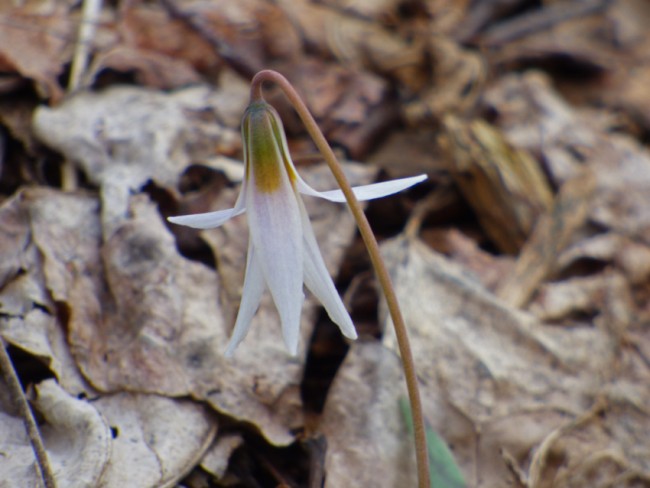
Ah, you can’t just walk quickly through the woods and count on finding wildflowers. You must walk slowly and look carefully around your feet, because the early flowers are almost hidden. We have planted many varieties of these flowers in the Woodland Garden, including some that don’t grow back on the trails such as this white trout lily. They may be only 4 inches tall, and the plants that bloom have only two mottled leaves. The single leaves don’t produce flowers, but produce food for the entire colony. Since we planted these recently, the colony isn’t very big yet.
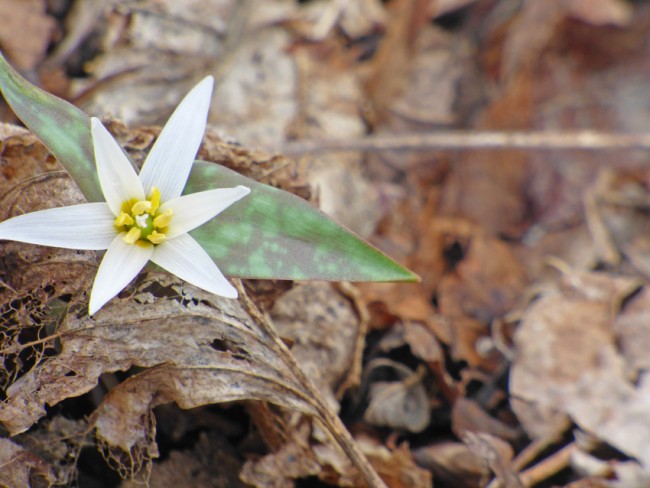
When the sun comes out, the blossoms will point up, inviting any passing pollinators to stop by for a visit.
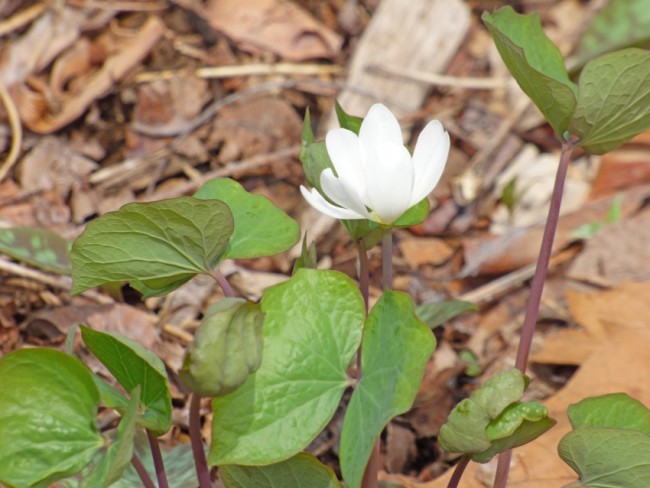
Twinleaf is another flower that starts small. The early leaves are small and kidney-shaped. As the season progresses, they become quite large. Twinleaf can be found in the Woodland Garden and along Little Huckleberry Creek where they will cover the hillside at their peak.
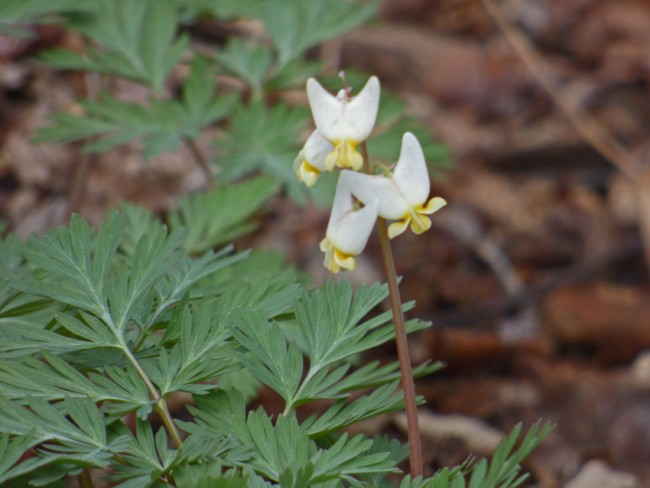
Dutchman’s Breeches are settling in well at the Woodland Garden. Their white blossoms are said to look like the baggy pants a Dutchman might have worn, hanging upside down on an arching clothesline.
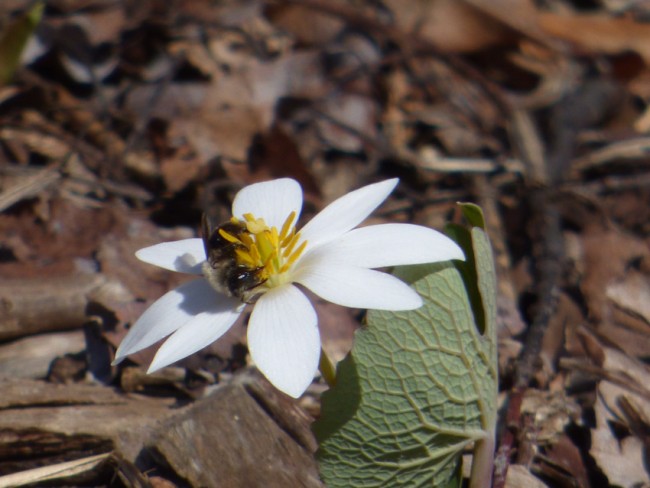
Bloodroot is another native added to the Woodland Garden, and is one of the first to bloom in the early spring. The leaves sprout close together, embracing the flower stem that rises between them. The underground rhizome oozes an orange-red juice when cut, thus the name “bloodroot.” The blossom opens wide on sunny days, but closes up when it’s cloudy.
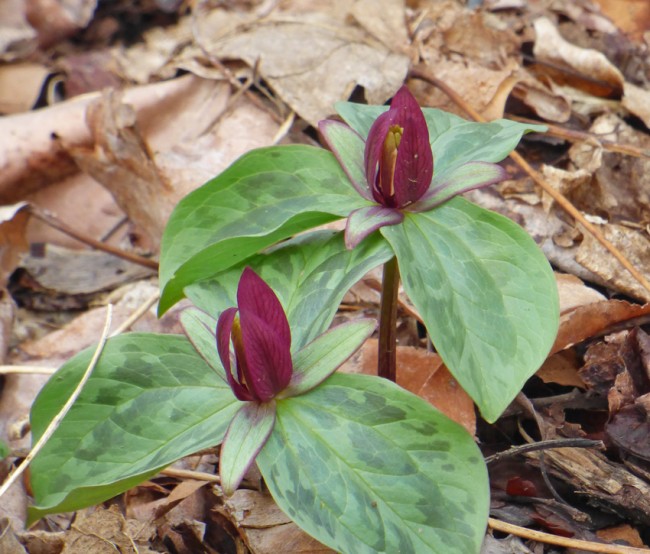
Sessile Trillium is the common species found at the Nature Preserve. “Sessile” means there is no stem between the blossom and the leaves. Look on the hillside across the creek for other varieties of trillium and see if you notice the difference. Every day in early spring is an adventure in discovery, as you watch closely for new flowers to poke their heads through the brown leaves!

